Basics of Plasma Cutting
Plasma arc cutting is a very simple way of getting your cuts done fast, precisely, and without a lot of fuss. But if you are completely new to the plasma cutting process, this may not be as straightforward.
Don't worry. Soon it will be.
Plasma cutters are rather simple machines. The plasma arc is much easier to handle than, let's say welding arc and the entire setup is way less complex than the Oxy-acetylene cutting process.
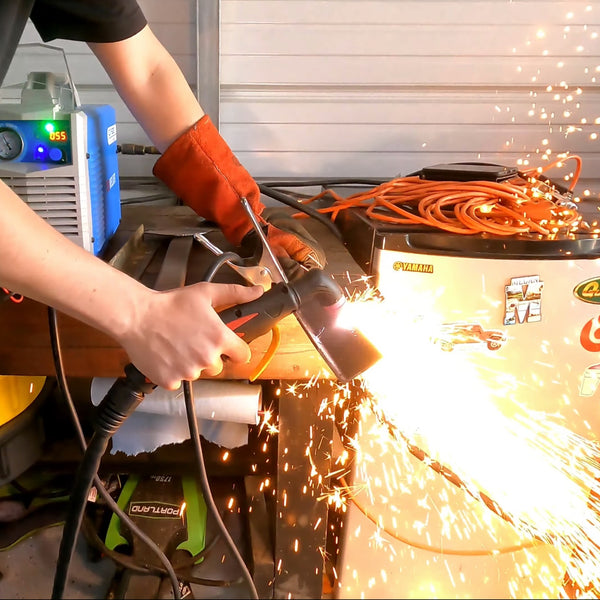
In this article, you are going to learn the basics of plasma cutting and how to set everything properly. Let's get you up to speed so that you can make some serious cuts!
What is plasma and how does the plasma cutting process work?
Plasma is the fourth state of matter but we need to define it in accordance with its purpose when working with plasma cutters. In that sense, plasma is an electrically heated gas that is created by heating the air to extreme temperatures making it electrically conductive or in other words, it becomes ionized gas.

This ionized air/gas under pressure becomes a plasma cutting arc that you use to slice the metal like butter.
Inside the plasma torch, there is an electrode and it receives the electricity from the machine. The compressed gas or air is also supplied through the plasma torch and once the electrode initiates the arc with the conductive metal (work-piece), the plasma gas arc is born.
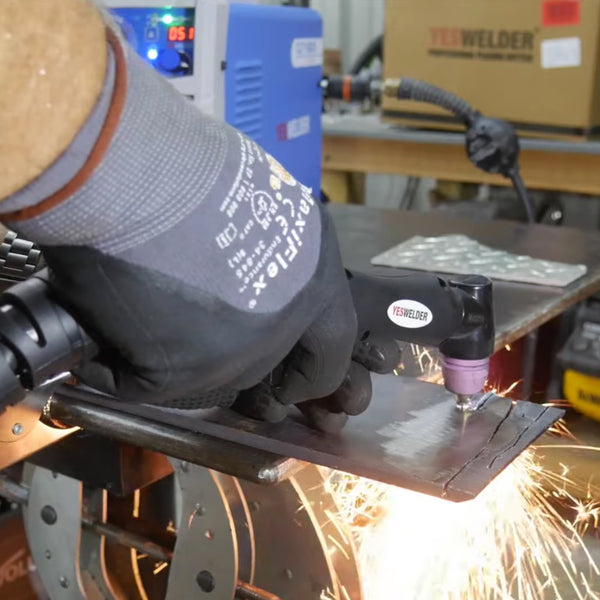
At that point, the compressed gas starts conducting the electricity and becomes plasma that bursts under high pressure through the small opening at the end of the nozzle. This electrically conductive air is a plasma arc that cuts the metal thanks to the incredibly high temperature that is concentrated in that small dot where the plasma touches the metal piece.
What can you cut with a plasma cutting process?
Every conductive metal.
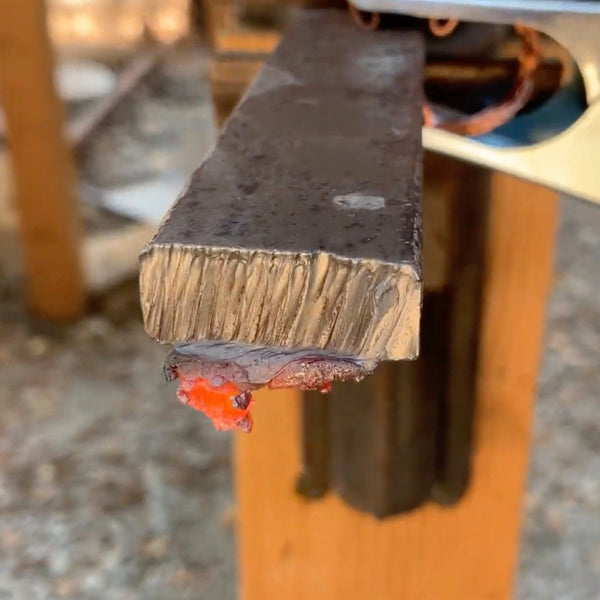
Mild carbon steel, stainless steel, aluminum, copper or any other non-ferrous metals. As long as it conducts electricity, you can cut it. It is a clean process that makes smooth cuts as long as your plasma cutter has enough power for the thickness you are working with.
You can use a plasma cutter in your home garage, outside (when it is not raining), in a welding shop, on site or wherever you need to cut conductive material.
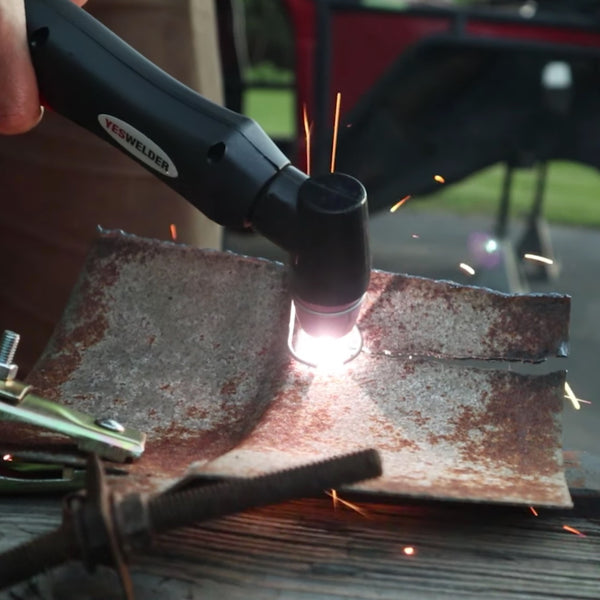
How does it fare against Oxy-Fuel cutting?
Well, first off, the oxy-fuel cutting process can only cut steel and ferrous metals that support the oxidizing process. That's because it cuts by burning or oxidation.
This means that you can't oxy cut aluminum and stainless steel for example. Plasma cutting is much easier to learn and you don't need oxy-acetylene gas tanks which are a fire hazard and require a special storage area.

Storing a plasma cutter is simple. Unplug it and place it in a relatively safe area and there should be no problems while owning an Oxy-Fuel system requires much more caution.
Plasma cutting requires air pressure, so you will need an air compressor. But unlike gas fuel bottles, you don't have to "refill" the air supplies. Air is literally everywhere and it's free. Although a compressor isn't free, neither are the gas tanks and they are much more difficult to move around.
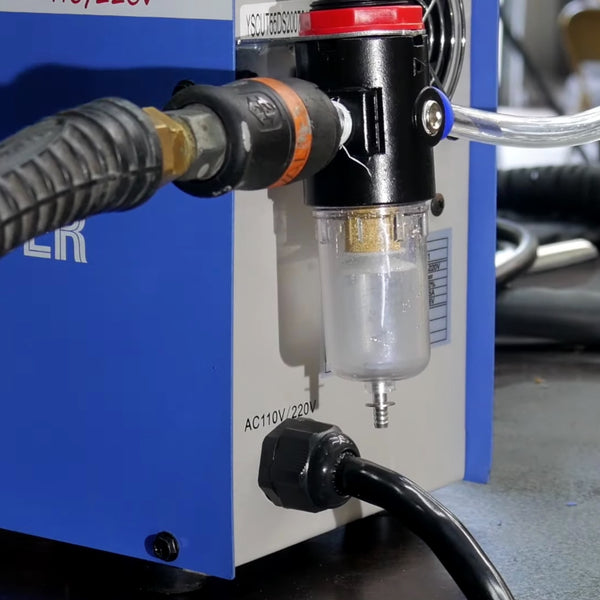
When cutting metal with a plasma arc, you don't need to preheat it unlike with Oxy cutting. Oxy cutting is only a better choice if you are cutting very thick metals or if you are working in a place where electricity is not available or desired. But for regular hobbyist use, plasma cutters are a much better choice.

What to look for when you are evaluating a plasma cutter for you
There are many elements of a plasma cutting machine that are important to know prior to buying it. Not every plasma arc cutting machine will satisfy your needs.
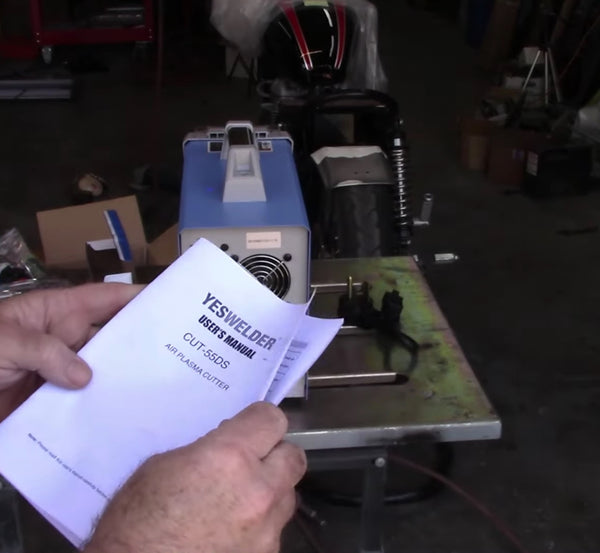
On the other hand, you could accidentally overspend and buy an overpowered unit that you will never use to its full potential. While this could improve its life span, it is generally not something that people like to do. It is best to get a machine that adequately supports your needs and costs as little as possible.
Let's now take a look at the most important features and specifications that will have a big impact on the machine's abilities and cost.

The maximum cut thickness and amperage
Every plasma arc cutting machine is rated for a certain clean cut thickness and maximum cut/severance thickness and this is more or less in accordance with its amperage power output.
The maximum clean cut represents the thickness that you can cut without any difficulties and the edge of the metal piece will be "clean". The edge will be straight and you will need little to no post cut clean up.
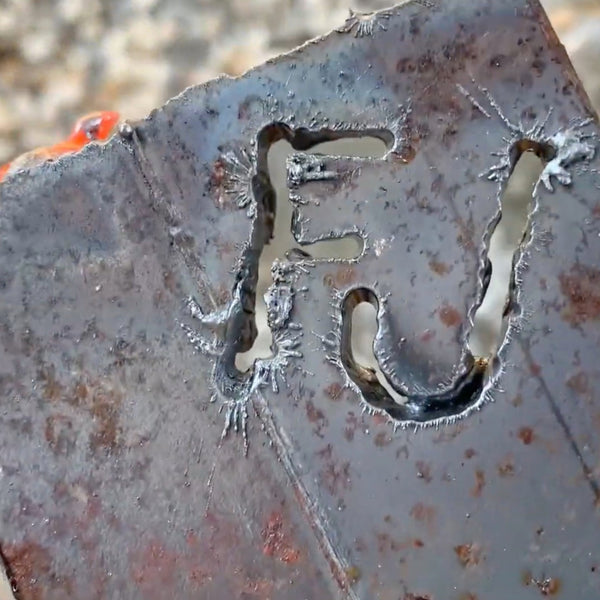
The maximum severance cut is the thickness that the machine will cut, but it may struggle, be slow, and the cut's edge will not be as pretty. You will need to do some post cut clean up with a grinder or a file.
The amperage will dictate most of the plasma arc cutting thicknesses but so will the type of metal being cut. Some metals are more difficult to cut than others. For example, a 55 amperage output may be enough to do a clean cut on a 1/2" mild steel plate but your cutting speed will be slower if you were to do the same thickness and amperage with stainless steel.
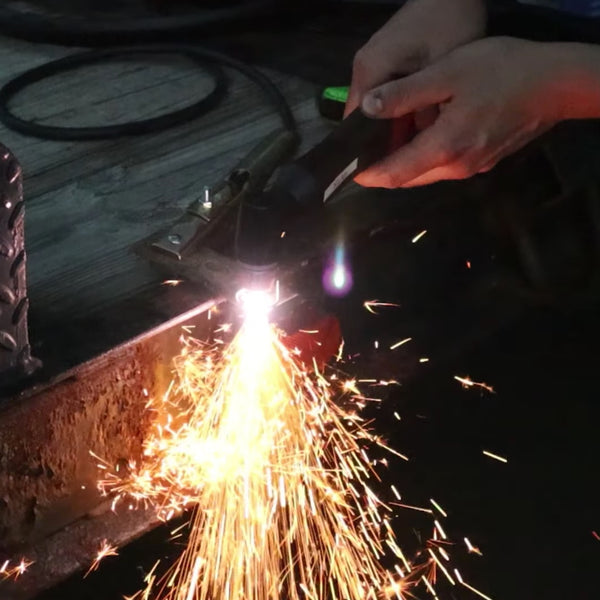
The plasma cutter duty cycle
The duty cycle represents the time period when your machine can work in contrast to the time period when it needs to rest. It is presented in percentage value and for the time intervals of 10 minutes.
For example, a plasma cutter with a 60% duty cycle will be able to cut for 6 minutes and then it will need to rest for 4 minutes. If you cut less than 6 minutes and let it rest for more than 4 minutes, you will prolong the lifespan of the plasma cutter but if the machine is rated for 60% that is what it should provide.

When it comes to plasma arc cutting thick materials that sit in the range of the maximum thickness the plasma cutter can handle, you will be pushing the machine to its maximum duty cycle so you should pay attention. Just keep it somewhere in your head that as you approach the maximum time use that the machine should rest.
The resting periods let the machine cool down so that there is no damage to the internal circuitry.
A High-Frequency start or a blowback plasma cutter?

This is a common question people struggle with.
To put this simply, you should get a High Frequency pilot arc start plasma cutter if you don't use any electrical devices in the workplace area. The High Frequency plasma arc start can interfere with the surrounding electronics like cellphones, laptops, CNC machines, other tools and machines and etc. This is rarely ever happening in real world scenarios but to stay on the safe side and abide by the machine instructions, you shouldn't use the HF start machines around such devices.

The blowback technology pilot arc plasma start is a different method that is safe to surrounding electronics. These plasma cutters have a special system inside the plasma torch that initiates the pilot arc by an electrode movement which opens the circuit and causes the electric spark.
Blowback start plasma cutters are more expensive, but they are a better choice if you use sensitive equipment in the work area.

The power input and portability
Some plasma arc cutters work only when plugged in a 220V power supply while many offer dual voltage capabilities 110V / 220V.
However, you should pay close attention to the amperage output when the unit is in the 110V mode. It will not be able to produce the maximum amperage that it can produce with the 220V input. Just make sure that the amperage it can produce is what you are going to be working with when you use the 110V inputs.

The portability of the plasma cutter is also something to consider. While most on the market are light, some are lighter than others. Here at YesWelder for example, we offer some of the best plasma cutters when it comes to the portability and the power output they provide.
Why is this important?
If you are a welder and your work site is constantly changing depending on the job, it is very helpful if your machine is light and you can actually work with the voltage that's available on site.
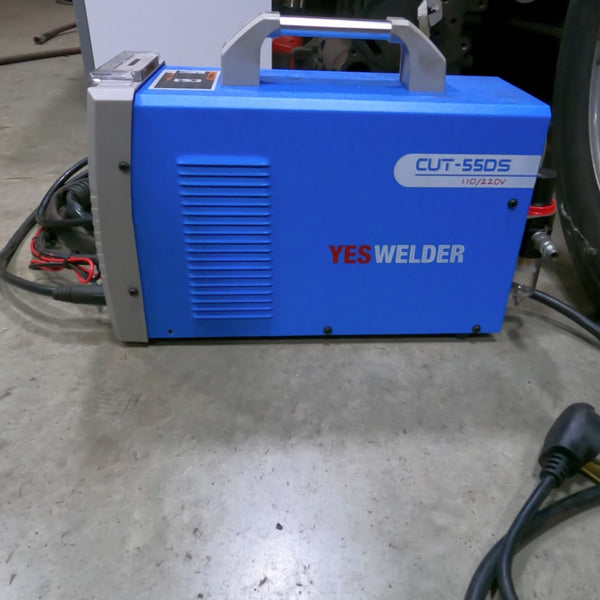
Consumables
Your plasma cutter will need what is commonly known as consumables. That's because these parts are replaced often and are generally not very expensive.
However, some brands don't offer a good price to quality ratio of their consumables and you will be replacing them very often. That is not an ideal situation.
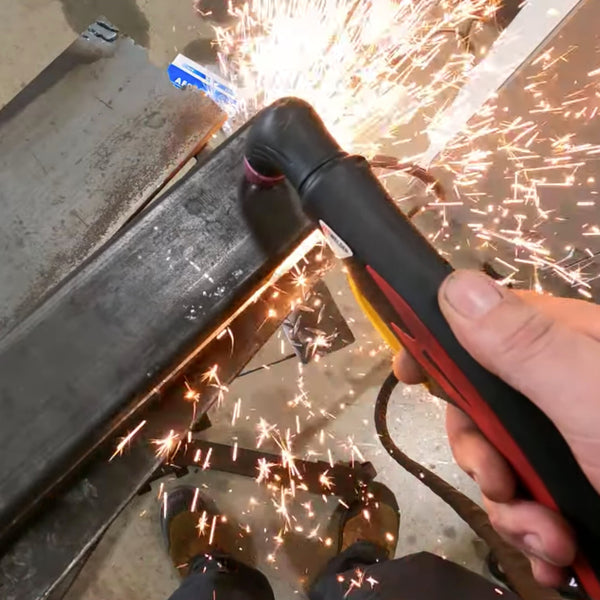
These consumables include but are not limited to nozzle tip, shield cup, gas ring, electrode and etc. This will depend on the brand.
How to Plasma Cut
Choosing a machine and actually using it are two different things. Plasma cutting is not difficult. You should start with simple things and with thin pieces of metal until you get the hang of it. You will pick up the skills as you go along. But let's now take a look at some basics that are important to know before you even begin.
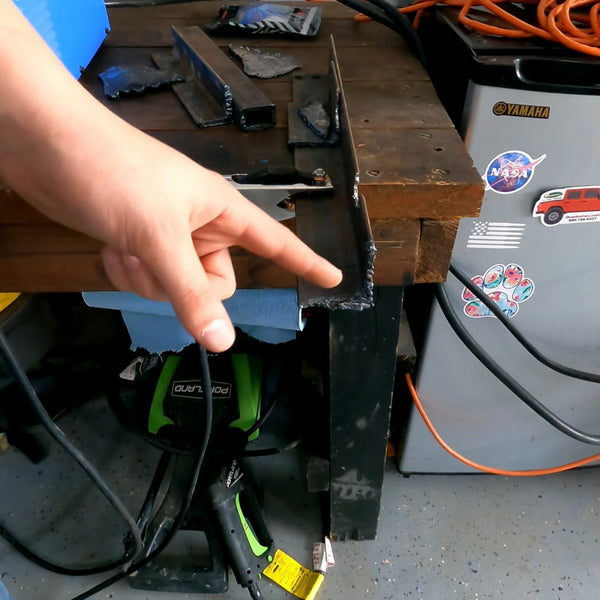
Plasma Cutting Safety
The plasma cutting process is not as dangerous as welding processes but there is an often overlooked catch. The plasma cutter will typically output extremely high voltage, up to 10 times what the welding machines do and this is why you need to be safe when plasma arc cutting.
Wear the proper welding attire to protect yourself from sparks and molten metal. This includes leather gloves, a leather apron, proper welding pants and welding boots.
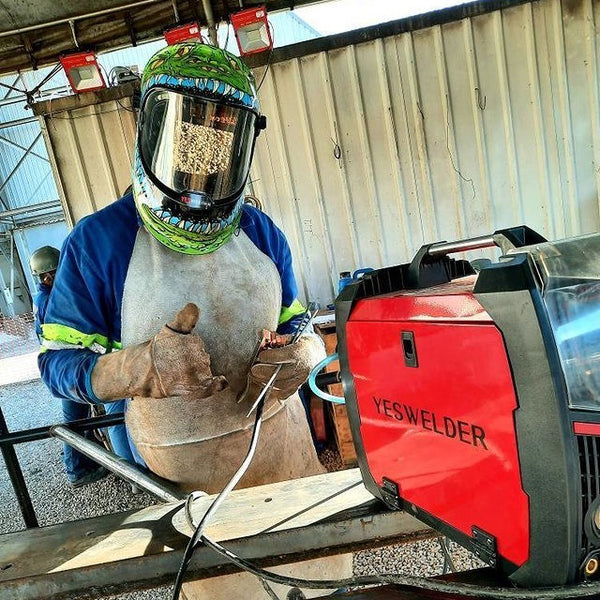
Further, to protect from electricity, you should be mindful of your surroundings. Don't stand in the water, don't use a plasma cutter if your hands and body are wet/sweaty and wear nonconductive footwear and gloves.
Protect your eyes with a welding helmet or safety glasses that have a proper DIN shade rating for plasma cutting. There is much more that can be said about safety but these are some of the basics. Always follow the instructions that come with the machine manual and the work safety codes and standards in your area.
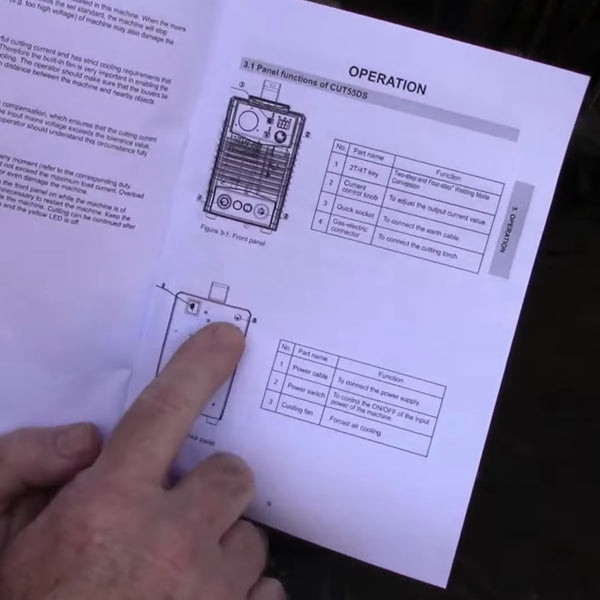
Cutting technique
A good technique for beginners is to simply use a drag shield extension for your plasma torch which will let you rest the torch on the work piece. This way you will be much more precise when plasma arc cutting.
Place your plasma cutting torch at an angle of about 60 degrees from the horizontal plane and about 30 degrees from the vertical plane while initiating the pilot arc. Then proceed to rotate the torch to the vertical position.

You will need to find an adequate cutting speed in accordance with the metal thickness. You can do that by observing the angle at which the molten metal is being pushed down the cutting line and by examining the cut quality.
If you move too slowly the molten metal dross will leave a residue at the bottom of the cut, while if you move too fast there will not be a clean penetration from the top. The angle at which the molten metal should fall from the cutting line when observed from below is about 20 degrees.

You can't really make a big mistake here and especially when you are just beginning. With some training, you will develop your technique and this will come easy to you. It is best to test some cuts on scrap metals. Go thin at first and gradually increase the thicknesses until you get the hang of it.
Conclusion
This was an overview of the plasma arc cutting process. Hopefully, you learned something new.
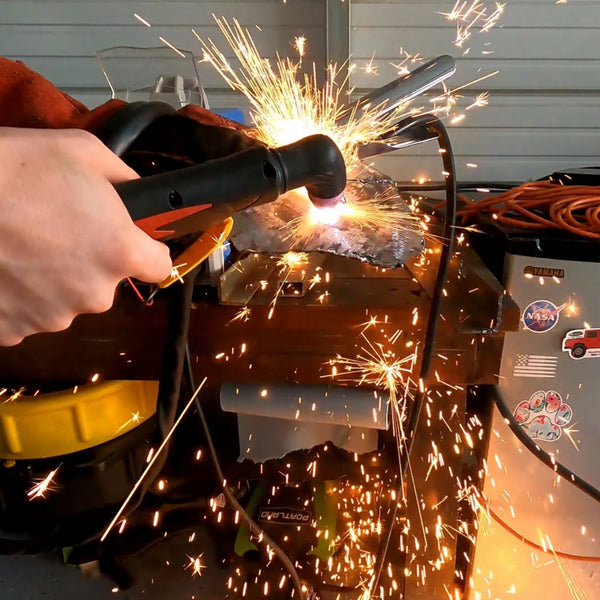
Remember, plasma cutting is not difficult but you do need an adequate machine and preparation. Make sure that you follow all of the safety protocols and you try things out slowly.
If you never used a plasma cutter before, it is a good idea to get some scrap metal and start learning gradually. Don't expect straight lines from the first try but on the other hand, people pick this up real fast because as soon as you get a hang of it, it becomes quite straightforward.
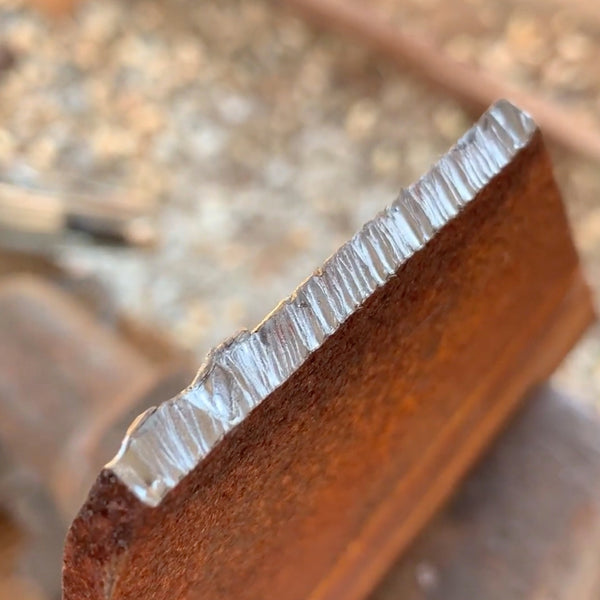
You would have a much more difficult time with the Oxy cutting than with plasma arc cutting.




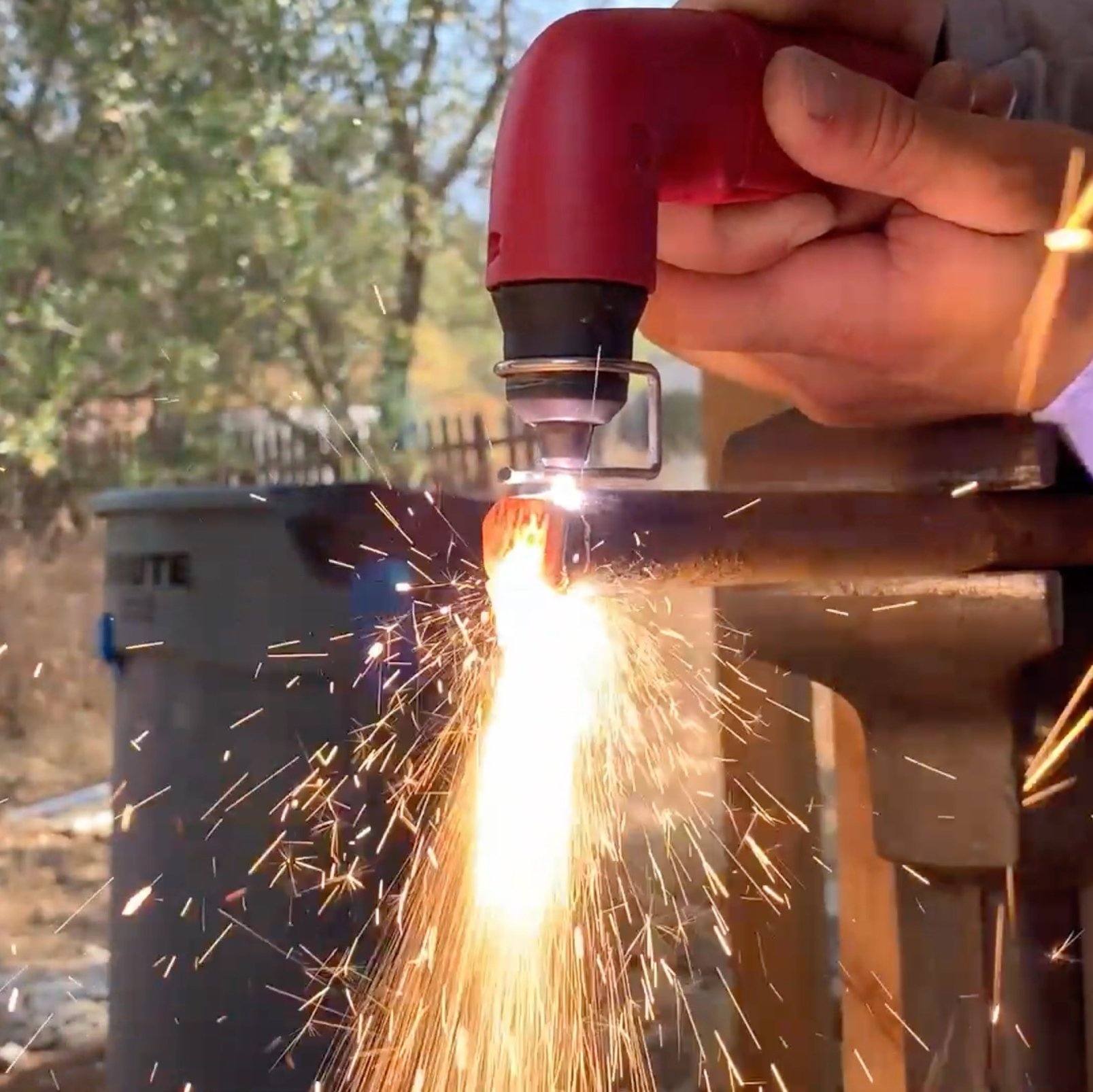


Very good article. Thanks for the quick lesson. Hope to see more in future posts.
VERY HELPFUL !!! APPRECIATE IT VERY MUCH !! THANK YOU !!!
I enjoyed the article. I’ve just purchased your new 5-way machine and await delivery with baited breath.
Having some text with the pictures to identify what was happening and including a table of amperage/thickness would make it more useful and the table, at least, would be posted with my YesWelder.
I also expect a company-produced article to have some information about their products. A post script with the high points of your offerings (e.g. Our plasma cutters operate at both 110 and 220v with a clean cutting thickness of .25 / .50 inch in mild steel. They use the HF plasma start and weigh in between 20 and 40 lbs. A compressor delivering 60 cfm @ 30 psi is sufficient for good results.) is appropriate.
I have used the oxy-fuel torches and it’s been fine aside from the whole set-up and keeping safe, but learning a bit more of these plasma cutters got me curious into trying them out!
Leave a comment